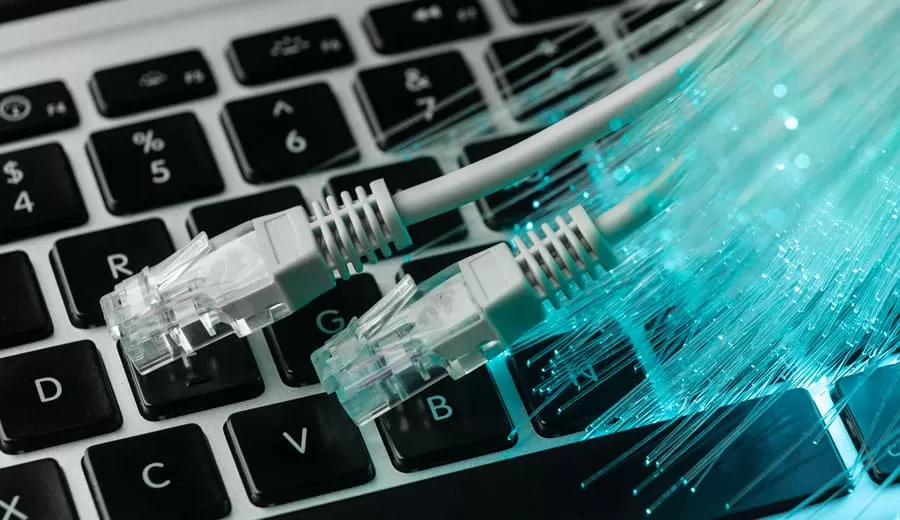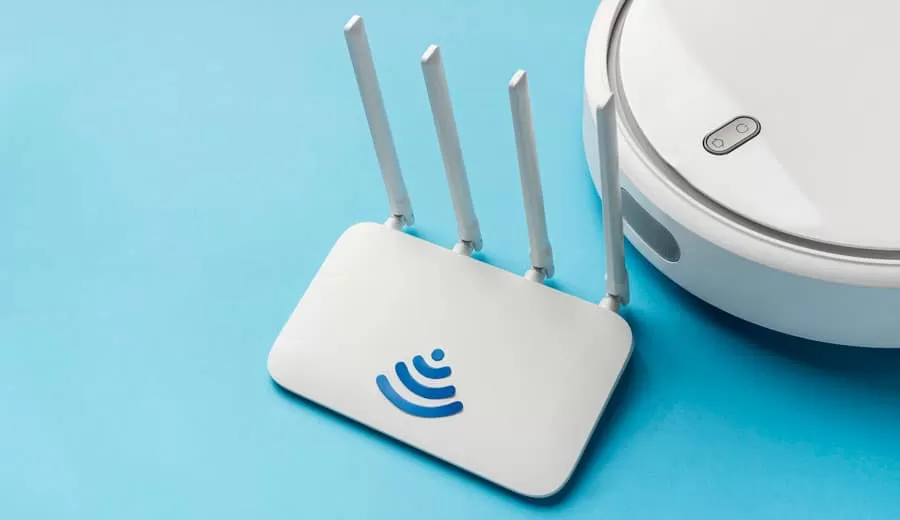Difference between Fibre and WiFi
To better understand the overall difference between fibre and WiFi connections, it is best to first understand these concepts individually.

What is Fibre?
Fibre can be described as an internet connection that makes use of fibre-optic cables to send data at incredible speeds. This is possible because of its use of light pulses, an alternative to the traditional copper wire and electricity use, for data transmission.
These cables are more resistant to interference; therefore your network has a lower chance of disruption. They are also resistant to corrosion, unlike traditional copper wires, which also better protects them. Since fibre-optics are so fine, they also have the ability to be easily scalable should you require it for business growth. Fibre can be used to establish connections for homes or businesses and offers higher bandwidth than alternatives such as ADSL.
What is Wireless Internet?
Wireless connections do not require the same extensive installation that fibre does, this is because wireless connections have already been established through radio towers for technology such as cell phone networks. It is therefore a connection that does not require a physically connected wire to make use of the internet.
Fibre WiFi itself, as we find ourselves surrounded by daily, is a network that allows for different digital devices to connect to the internet wirelessly through radio waves. This is typically done through devices such as WiFi routers to establish wireless networks. Any device with the capability to connect to a wireless network can make use of fibre WiFi – these are generally devices such as smartphones, laptops, computers etc.
When comparing the two it is important to consider the following:
Interference
Depending on the materials used, the possibility of interference on your connection will differ. For example, the wide use of copper wires may pose a risk of disruption on your network connection as copper wires need to be properly installed and regularly maintained to avoid releasing electromagnetic currents that have the potential to damage networks. Fibre networks on the other hand don’t pose this risk as the cables are made from glass or plastic and do not rely on electricity to transfer data.
Attenuation
This refers to the weakening of a connection and is generally due to distance. Distance placed between a connection and copper wires has the potential to decrease and degrade faster than Fibre connections, as the light pulses used for data transmission in fibre cables let data travel further and more accurately. Similarly, WiFi connections also have distance restrictions depending on how far from the WiFi router you wish to connect your device.
Speed
When you access an internet connection, you are doing one of two things: downloading or uploading. These two connections often function at different speeds which may affect overall internet speed. Despite this, you may still face disruptions on speed depending on the amount of data being transferred at once. Although in essence wireless connections and fibre connections can transmit data at the same speed, it is the fibres’ ability to be able push through with high speeds despite network congestion that makes it superior, as standard ADSL connections use of copper lead to busy networks which enforce shaping and throttling on the line.
In spite of the difference between fibre and WiFi, we often find that fibre networks and wireless transmissions are used side by side – as we find with fibre in our own homes!
Why is fibre WiFi internet faster?
The biggest bragging right of fibre-optic cables is their inherent speed, but how do these cables offer a faster connection compared to traditional copper cabling? In order to encode data for successful internet connection, a change of energy needs to occur. While copper wiring makes use of electrical currents, fibre-optic cables use pulses of light. This means that fibre has the capability to transmit data faster, as scientifically light is able to travel faster and further than the electricity used with copper.
Light also offers stronger signals as it travels through the cables. This means that it does not weaken the signal in the same way that copper cables do. They also do not pose the risk of electrical interference.
Is it expensive?
Fibre is the most reliable connection you can get for your home or office. As its demand continuously grows, fibre ISP’s, such as Yutiliti, are able to offer our clients competitive prices to match standard ADSL internet packages.
We offer a variety of solutions to suit different desired speeds with capped and uncapped options. As the benefits of fibre often outweigh that of ADSL, and are similar in price, it is no wonder why it is as popular as it is!
Fibre with a difference
Yutiliti is one of the most trusted fibre internet service providers around.
Since most service providers get held up by third parties, our team at Yutiliti has focussed on eliminating this hurdle by streamlining our process from fibre installation to internet connection! We understand that you are signing up for fibre because you are looking for speed. This is why once your line has been installed, we will have your line activated within 5 days.
Don’t wait a minute longer asking yourself ‘what is fibre?’, get your fibre set up today!



